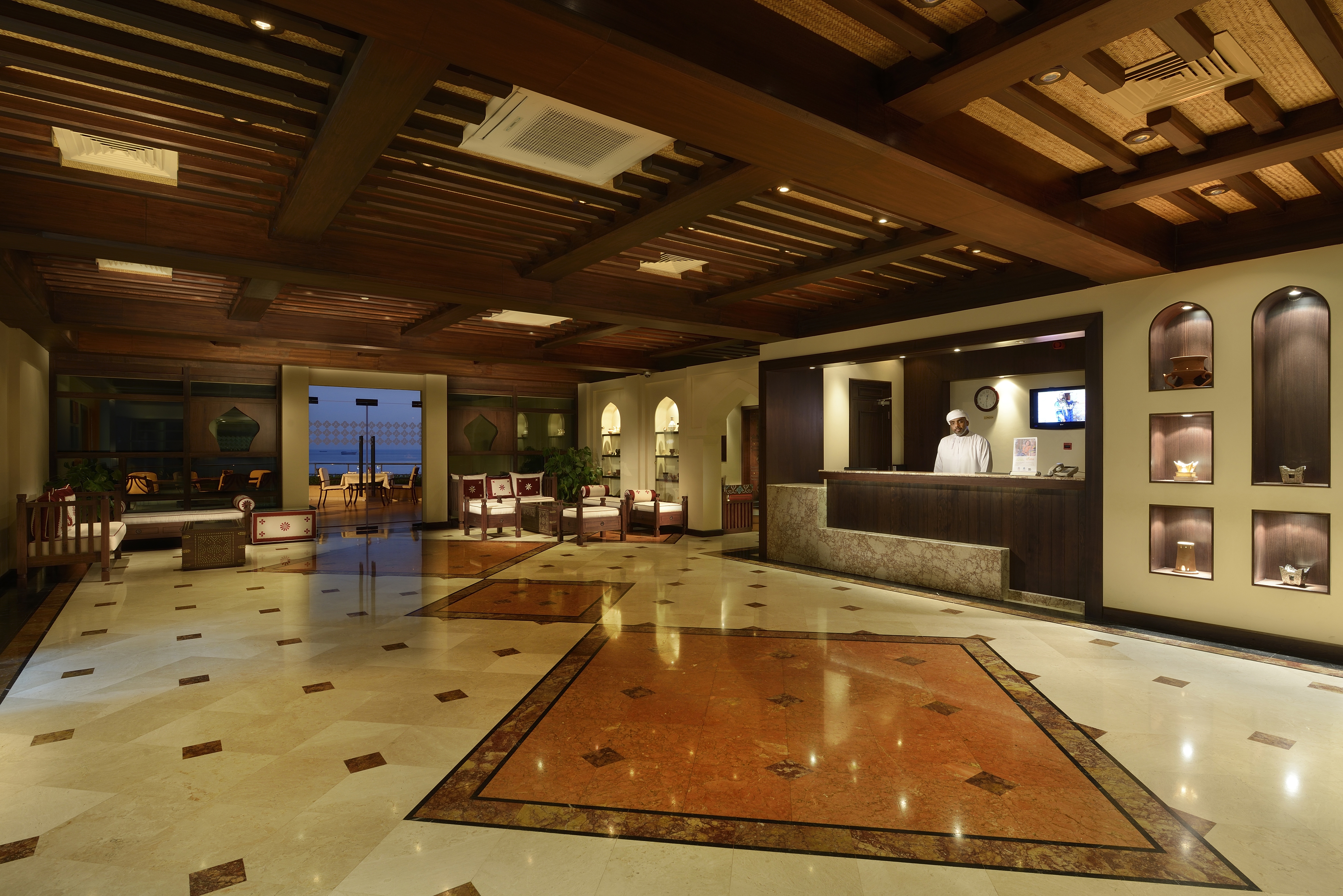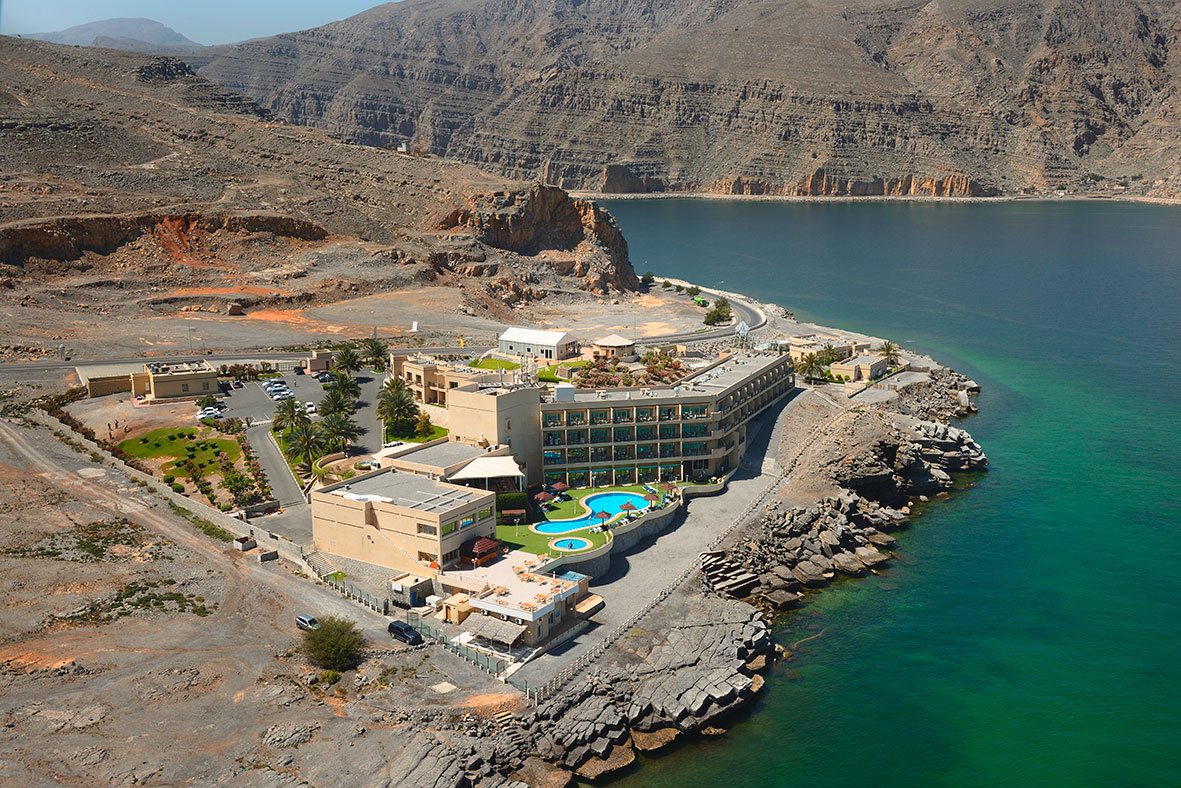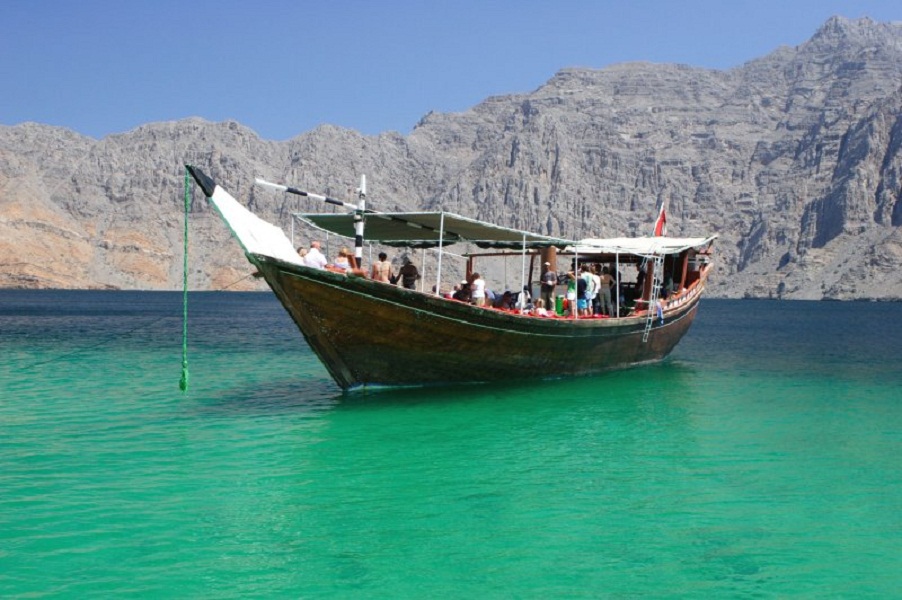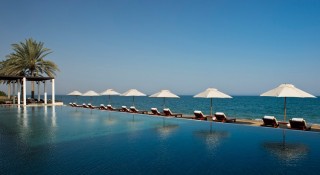Knowing that prehistoric tribes inhabited the mountains long before the arrival of the Shihuh, we were intent on finding evidence of their lives. Just a few kilometers from Khasab on the coastal road, we followed a track up to the village of Tawi. Opposite a natural well—tawi—from which the village has taken its name, stood a tumble of massive boulders. Right before us, pecked with flint onto a smooth-faced wall of rock, was the artistic legacy of an ancient people: petroglyphs depicting camels, boats, and huntsmen.
Within minutes, we were surrounded by curious villagers. The younger girls spoke some English and pointed to the location of other engravings, not visible from the ground. I followed in Richard’s wake as he climbed to a viewing point between precariously bal-anced boulders. These petroglyphs, too, were remarkable, and thought-provokingly similar to engravings we had seen on a previous trip to the Jebel Akhdar, some two hours’ drive south of Muscat. Almost identical scenes of people hunting and warriors riding horses confirmed to me that the same prehistoric people traveled long distances through Oman’s desert and mountains, halting at Tawi before continuing on to the coast to trade.
On our return to town, we stopped to admire the shadowed outline of Khasab Fort. Overlooking an inlet against a backdrop of barren mountains, it stands guard over the old settlement as it has done for centuries past. The irregular shape of the four corner towers and adjoining walls, built by the Portuguese in the 17th century, is supplemented by the massive central tower in the main courtyard. This is believed to be of Persian origin and to predate the castle itself. Ceilings of plaited palm fronds and mud, supported by teak timbers brought from India, are just one more reminder of the area’s long-standing trade and interchange of goods. Once a crucial supply station for Portuguese ships, the fort has remained in constant use, serving as residence for the wali—the local governor—and then as a prison, before becoming the museum that it is today.
Mist and clouds from the mountains greeted us the following morning. Nevertheless, we were determined to ride a dhow into one of the many isolated inlets on the coast. A bay next to the port, quite literally filled with high-powered speedboats, testified to the fact that Khasab was—and is—an Iranian smuggling den. Sheep and goats are brought into this bay by day and exchanged for American cigarettes and electronic goods; the smugglers head back to Iran under the cover of darkness, to avoid the coast guard. With so many oil tankers passing to and fro in the Strait of Hormuz, the 55-kilometer return trip is said to be quite hazardous.
Finally we located our dhow and, given the poor weather conditions, decided on a half-day trip into the nearby fjord of Khor Ash Sham. Ali, our skipper, was a native of Kumzar, a village set in a remote cove on the northernmost tip of the peninsula. A gentle and courteous man, he told us he was familiar with every hidden inlet on the coast.
Furnished with Persian rugs and floor cushions, Ali’s dhow was his prized possession. He treated us like honored guests, offering us miniature glasses of hot sweet tea and fresh fruit; for lunch, barbecued fish was served with salad and Arabian flatbread. As with most converted dhows, an engine had replaced the boat’s sails, and a coffin-sized closet in the stern housed primitive but adequate toilet facilities.








